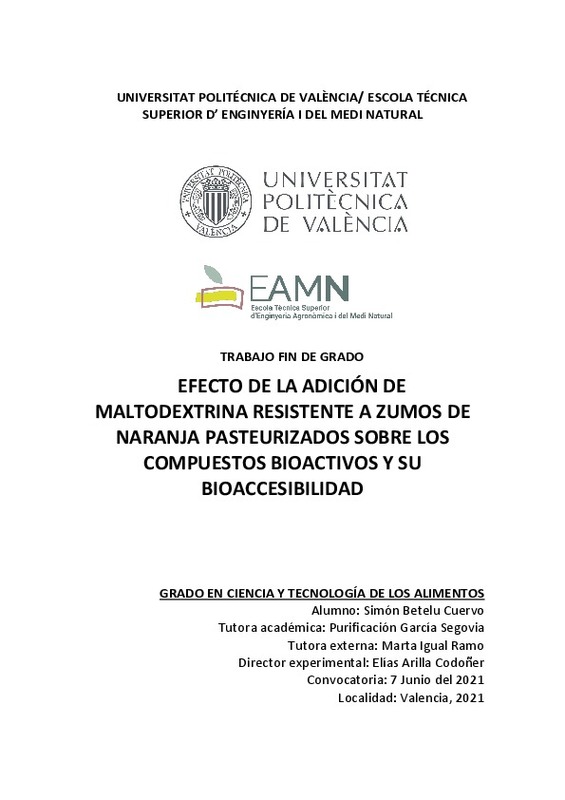JavaScript is disabled for your browser. Some features of this site may not work without it.
Buscar en RiuNet
Listar
Mi cuenta
Estadísticas
Ayuda RiuNet
Admin. UPV
Efecto de la adición de maltodextrina resistente a zumos de naranja pasteurizados sobre los compuestos bioactivos y su bioaccesibilidad
Mostrar el registro completo del ítem
Betelu Cuervo, S. (2021). Efecto de la adición de maltodextrina resistente a zumos de naranja pasteurizados sobre los compuestos bioactivos y su bioaccesibilidad. Universitat Politècnica de València. http://hdl.handle.net/10251/169389
Por favor, use este identificador para citar o enlazar este ítem: http://hdl.handle.net/10251/169389
Ficheros en el ítem
Metadatos del ítem
| Título: | Efecto de la adición de maltodextrina resistente a zumos de naranja pasteurizados sobre los compuestos bioactivos y su bioaccesibilidad | |||
| Autor: | Betelu Cuervo, Simón | |||
| Director(es): | Arilla Codoñer, Elías | |||
| Entidad UPV: |
|
|||
| Fecha acto/lectura: |
|
|||
| Resumen: |
[ES] La maltodextrina resistente (RMD) es una fibra funcional soluble en agua y fermentable. La RMD es un prebiótico saciante, reductor de glucosa y triglicéridos en la sangre y promotor de una buena salud intestinal. Su ...[+]
[EN] Resistant maltodextrin (RMD) is a water-soluble and fermentable functional fiber. RMD is a satiating prebiotic, reducer of glucose and triglycerides in the blood, and promoter of good gut health. Its addition into ...[+]
|
|||
| Palabras clave: |
|
|||
| Derechos de uso: | Reserva de todos los derechos | |||
| Editorial: |
|
|||
| Titulación: |
|
|||
| Tipo: |
|
recommendations
Este ítem aparece en la(s) siguiente(s) colección(ones)
-
ETSIAMN - Trabajos académicos [3541]
Escuela Técnica Superior de Ingeniería Agronómica y del Medio Natural







